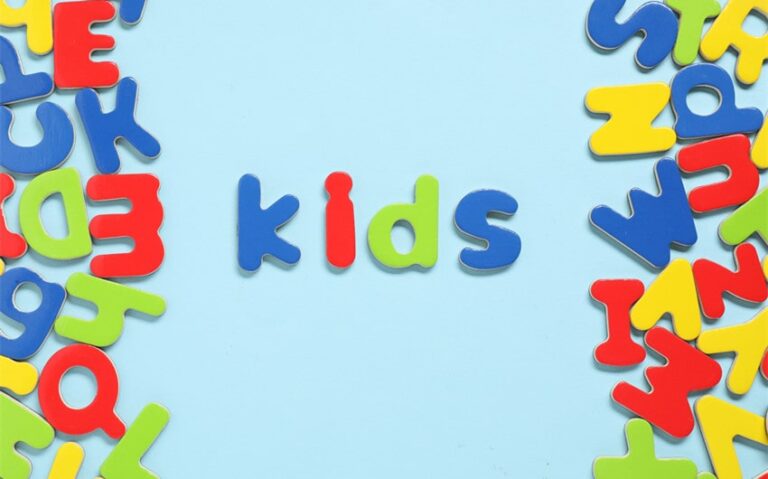12 Creative Warm Up Activities for English Class Engagement
Starting an English class on the right note can make all the difference in how students engage and learn. That’s where warm up activities come in. These quick, fun exercises are perfect for breaking the ice, getting everyone in the right mindset, and boosting energy levels.
Whether you’re teaching beginners or more advanced students, adding a few simple activities can transform the atmosphere of your classroom, making learning more enjoyable and effective. Let’s dive into some creative and easy ways to kick off your lessons with warm up activities that everyone will love.
Types of Warm-Up Activities

Warm-up activities come in a variety of forms, each serving different purposes and engaging students in unique ways. Whether you’re looking to break the ice, boost vocabulary, or get students talking, there’s a warm-up activity that fits the bill. Here’s a closer look at some effective types of warm-up activities for English class:
1. Icebreakers
Icebreakers are designed to get students comfortable with each other and create a friendly classroom atmosphere. These activities are especially useful at the beginning of the school year or when introducing new students to the class.
Examples:
Two Truths and a Lie:
Each student writes down two truths and one falsehood about themselves. When it’s their turn, they share all three statements with the class, and the rest of the students guess which one is the lie. This activity not only encourages speaking and listening skills but also allows students to learn quirky or fun facts about their classmates, helping to build a stronger sense of community.
Name Games:
Students sit in a circle, and each person says their name followed by an adjective that starts with the same letter (e.g., “Clever Chloe”). As the game progresses, each student must repeat all the previous names and adjectives before adding their own. This game helps with name memorization and is particularly useful for larger classes where students might struggle to remember each other’s names.
2. Vocabulary Games
Vocabulary games are an engaging way to review and expand students’ vocabulary in a fun, competitive format. These activities can help reinforce words learned in previous lessons and introduce new vocabulary in a context that makes it easier to remember.
Examples:
Word Association:
Start with a word related to your current lesson (e.g., “ocean”), and ask each student to say a word that they associate with the previous one (e.g., “fish,” “coral,” “beach”). The game continues around the room, with no word being repeated. This activity can be adapted to focus on specific themes, such as travel, food, or emotions, helping students to think creatively and make connections between words.
Pictionary:
Write down vocabulary words from recent lessons on slips of paper, and place them in a bowl. Divide the class into teams, and have one student from each team draw a word without speaking, while their teammates try to guess the word. For example, if the word is “giraffe,” the student might draw a tall animal with a long neck. This visual and interactive game reinforces word meanings and is especially effective for students who are visual learners.
3. Grammar Exercises
Grammar exercises in warm-up activities provide a quick and interactive way to review essential grammar points before diving into more complex lessons. These activities are ideal for reinforcing rules and structures that students may find challenging.
Examples:
Sentence Scrambles:
Write several sentences on the board, but scramble the word order (e.g., “happy was she very”). Students work individually or in pairs to rearrange the words into a correct sentence (“She was very happy”). This exercise helps reinforce understanding of sentence structure, subject-verb agreement, and word order, and can be adjusted for difficulty depending on the students’ proficiency level.
Quick Quizzes:
Prepare a short quiz that includes multiple-choice or fill-in-the-blank questions focusing on recent grammar topics, such as past tense verbs or possessive pronouns. For instance, you might ask, “Which is the correct form: ‘She went to the store’ or ‘She goes to the store’?” After the quiz, go over the answers together, using the opportunity to explain any common mistakes and clarify grammar rules. This not only reviews the material but also gives you a quick assessment of how well students have grasped the concepts.
4. Speaking Activities
Speaking activities as warm-ups encourage students to practice their verbal communication skills in a relaxed setting. These activities are particularly useful for building confidence and fluency in spoken English.
Examples:
Picture Descriptions:
Display a picture related to your lesson topic (e.g., a busy market scene or a family at dinner) and ask students to describe what they see. Encourage them to use as much detail as possible, focusing on specific vocabulary and sentence structures you’ve covered in class. For example, a student might say, “In the picture, I see a woman selling fruit. She has a basket full of oranges, and a child is buying some bananas from her.” This activity helps improve observation skills, expands vocabulary, and encourages descriptive language.
Short Debates:
Present a simple, relatable topic (e.g., “Is it better to have pets or not?”) and divide the class into two groups—one for and one against. Give each group a few minutes to brainstorm their arguments, then have them present their points in a brief, informal debate. This activity not only stimulates critical thinking but also allows students to practice constructing and defending their opinions in English, which is a valuable skill in real-life conversations.
5. Listening Exercises
Listening exercises as warm-up activities help sharpen students’ ability to understand spoken English. These activities are crucial for improving comprehension skills, especially in a world where listening is a key component of communication.
Examples:
Music-Based Activities:
Play a popular song that is age-appropriate and easy to understand. Before playing the song, provide students with a worksheet containing the lyrics but with some words missing. As the song plays, students fill in the blanks with the missing words. For example, you might play “Imagine” by John Lennon and ask students to fill in words like “dreamer,” “heaven,” and “peace.” Afterward, discuss the meaning of the song and the missing words. This activity enhances listening skills, introduces students to cultural elements, and can spark discussions on the song’s themes.
Short Audio Clips:
Play a short audio clip, such as a news report or a segment from a podcast. Ask students to listen carefully and then summarize what they heard. You can ask questions like, “What was the main idea of the clip?” or “What were the key points mentioned?” This exercise is excellent for practicing note-taking, identifying key information, and improving overall listening comprehension. To make it more engaging, choose clips that are relevant to students’ interests or current events.
6. Reading Warm-Ups
Reading warm-up activities get students thinking about texts before they dive into more extensive reading tasks. These activities can help activate prior knowledge and set the stage for deeper comprehension.
Examples:
Short Passages:
Select a brief passage related to the day’s lesson, such as a news article, a historical text, or a fictional excerpt. Have students read the passage silently, then ask a few comprehension questions to ensure they’ve understood the key points. For example, if the passage is about climate change, you might ask, “What are the main causes of climate change mentioned in the passage?” or “How does the author suggest we address this issue?” This activity not only primes students for the main lesson but also improves their reading comprehension and critical thinking skills.
Poetry Reading:
Choose a short, simple poem that aligns with the lesson’s theme, and read it aloud to the class. Afterward, discuss the poem’s themes, language, and structure. For instance, you might read Robert Frost’s “The Road Not Taken” and ask students what they think the poem is about, how it makes them feel, and what literary devices they notice. This warm-up is excellent for exploring figurative language, rhythm, and emotions, and it can set a reflective or creative tone for the lesson ahead.
Tailoring Warm-Up Activities to Different Levels

Beginner Students
For beginners, keep warm-up activities simple and visually engaging. Use matching games or flashcards to help them associate new vocabulary with images. Focus on basic language skills like simple sentences (“I am a student”) and common phrases.
Repetition is key, so start each class with a quick review of previously learned material through fun, repetitive games that reinforce their learning in a low-pressure environment.
Intermediate Students
Intermediate students can handle more complex activities. Gradually introduce tasks that require a broader range of vocabulary and grammar, such as describing pictures in detail or combining sentences using conjunctions.
Short debates on relatable topics, like “Is it better to have school uniforms?” can stimulate critical thinking and encourage more fluent expression. These activities challenge students while building on their existing knowledge.
Advanced Students
Advanced students are ready for challenging warm-ups that involve authentic materials and complex language use. Start with text analysis or in-depth discussions on topics like “Should social media be regulated?” to enhance critical thinking and fluency.
Grammar exercises might include rewriting sentences or correcting errors in longer passages. Encourage creativity by asking them to write short stories or speeches, pushing them to apply their language skills in real-world contexts.







